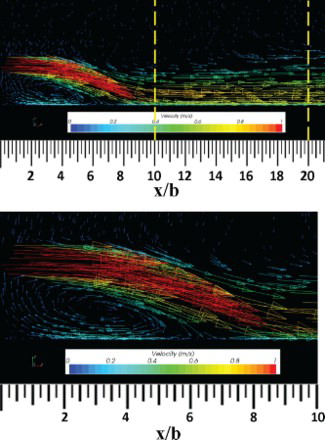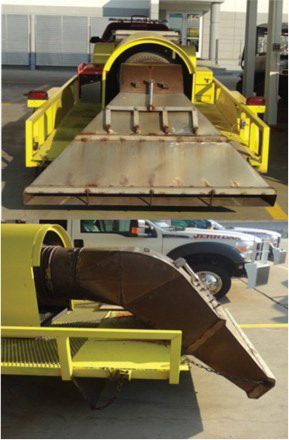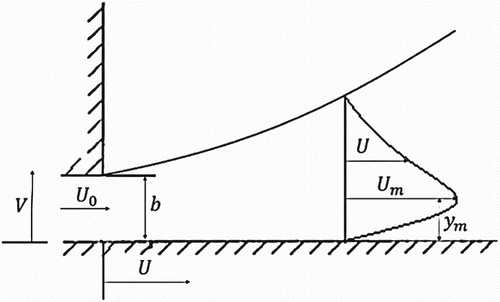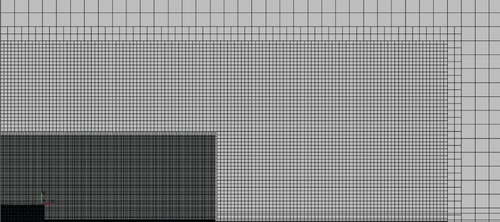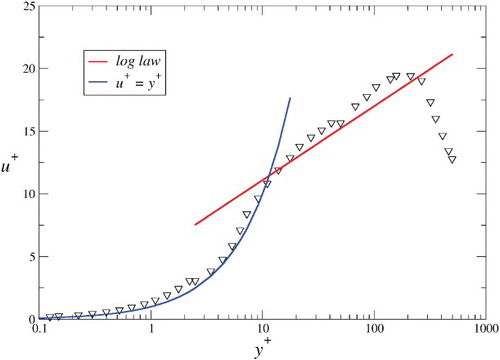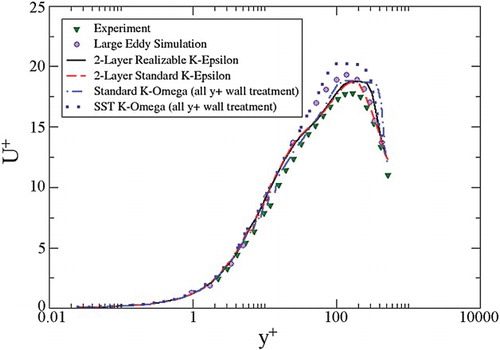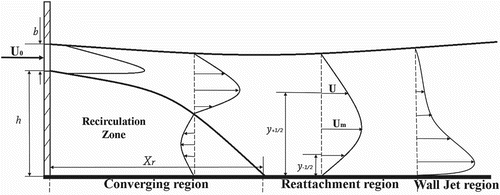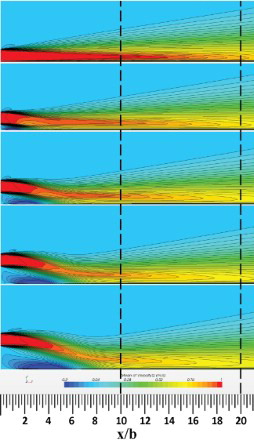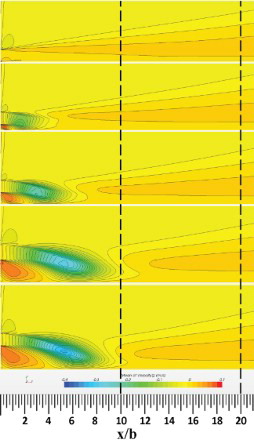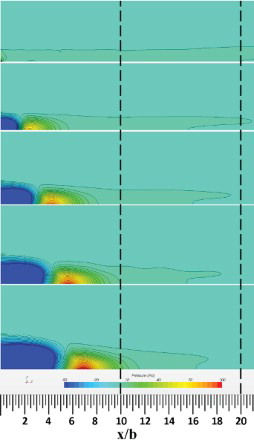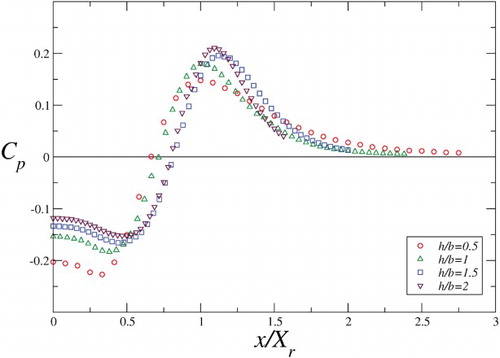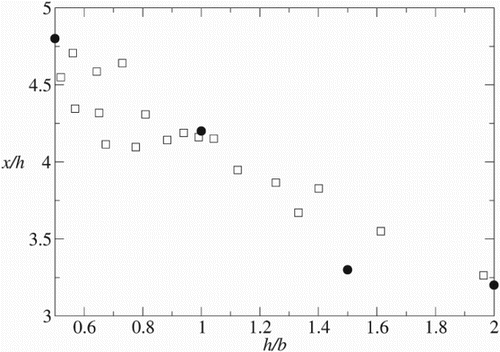Figures & data
Table 1. Comparison between the experimental and CFD-predicted values of the normalized wall friction velocity and location of the maximum streamwise mean velocity at  .
.
Figure 7. Comparison between the experimental data and CFD predictions of Reynolds shear stress at
and 20.
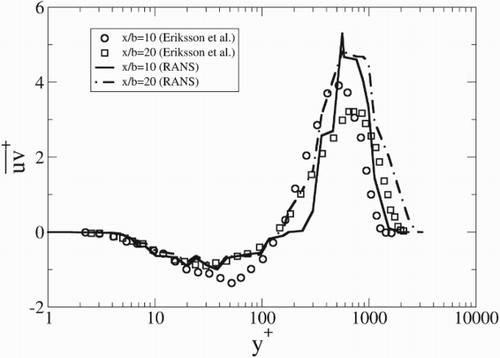
Figure 8. Comparison between the experimental and CFD-predicted (a) jet growth rate and (b) decay of streamwise mean velocity.
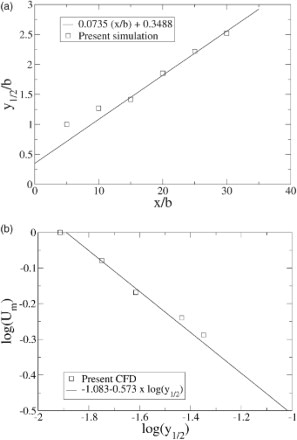
Figure 10. The streamwise decay of the maximum streamwise local mean velocity ;
is scaled with the reattachment length
(top), and with the jet height
(bottom).
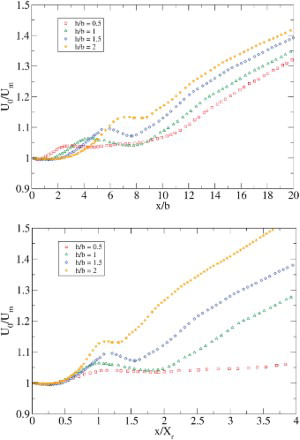
Figure 11. The streamwise evolution of the jet half-width ();
is scaled with the reattachment length
(top), and with the jet height
(bottom).
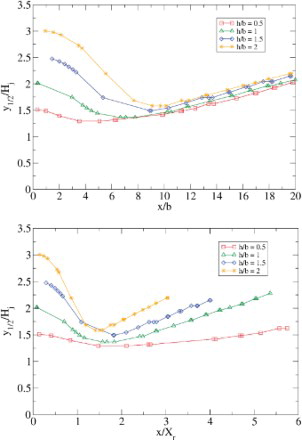
Figure 12. Mean velocity vectors corresponding with the wall offset of , whole flow view (top), and zoomed-in view (bottom).
